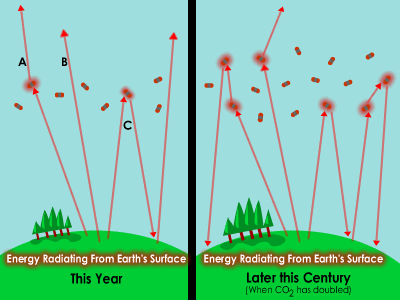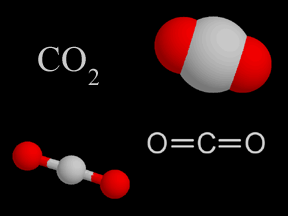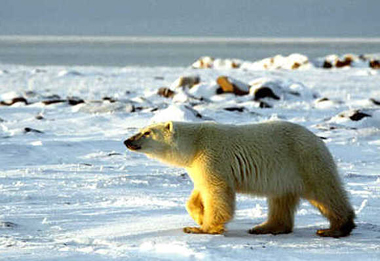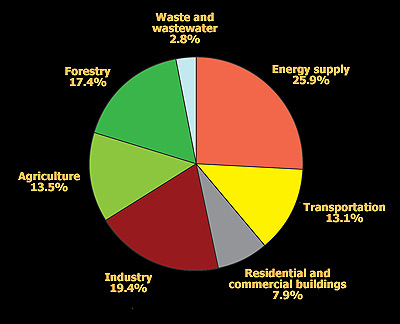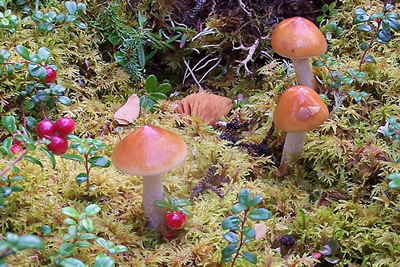
A Windows to the Universe image based on a graph from the IPCC 4th Assessment Report
Related links:
News Story: Intergovernmental Panel on Climate Change 4th Assessment Report
Read the IPCC Physical Science Basis Report (Working Group I)
IPCC Frequently Asked Questions
NSF Podcast: "Degrees of Survival"
Climate Change and Sea Level Rise
Global Warming: Scientists Say Earth Is Heating Up
Earth’s climate is warming. During the 20th Century Earth’s average temperature rose 0.6° Celsius (1.1°F). Scientists are finding that the change in temperature has been causing other aspects of our planet to change. The effects of global warming are far reaching.
The warming is causing air and oceans to warm, more snow and ice in Earth’s polar regions to melt, and sea level rise. Many different effects of global warming have been seen at continental scales, as well as at smaller regional scales. Arctic temperatures have risen at twice the rate of the global average in the past century. The amount of precipitation in different regions of the world has changed, and so have aspects of extreme weather events such as droughts, heat waves, and the intensity of hurricanes and typhoons.
Things that we humans are doing are causing Earth to warm according to the Intergovernmental Panel on Climate Change (IPCC). Human activities that are currently causing global warming include burning fossil fuels like coal, oil, and gas. Burning these fuels releases greenhouses gases into the atmosphere and more greenhouse gases causes Earth's greenhouse effect to grow stronger, warming the climate. Changes in the way land is used also have an impact on climate. For example, when trees and other plants are cut down to make way for new buildings or parking lots, climate warms because less carbon dioxide is taken out of the atmosphere without the plants. Plus, the asphalt and buildings tend to absorb more heat than forests and fields, a quality called albedo.
What does the future hold? There will be more global warming is in our future according to the results of computer models summarized by the IPCC. For the next two decades warming of about 0.2° Celsius is projected. If we continue to emit as many, or more, greenhouse gases, this will cause more warming during the 21st Century than we saw in the 20th Century. During the 21st Century, various computer models predict that Earth’s average temperature will rise between 1.8° and 4.0° Celsius (3.2° and 7.2° F) depending largely on how humans change the ways they live on the planet.
Although there is a certain amount of global warming that we are going to have because of our activities during the past century, there are many ways to help slow the rate of warming. Recently, many people and companies have been trying to be "Carbon Neutral" to prevent more greenhouse gases from entering the atmosphere.








